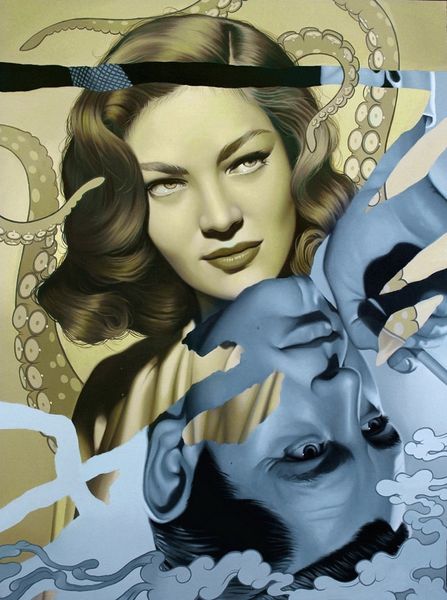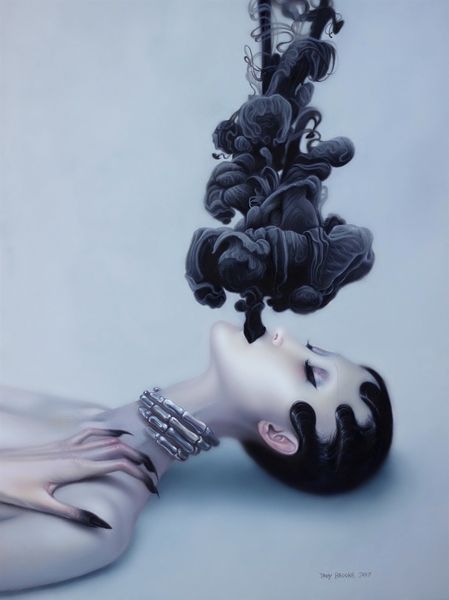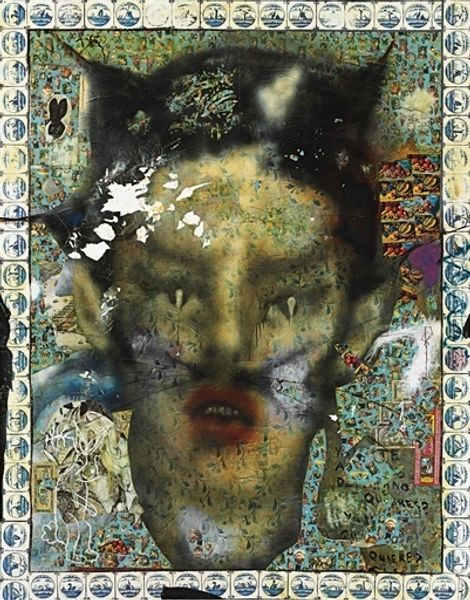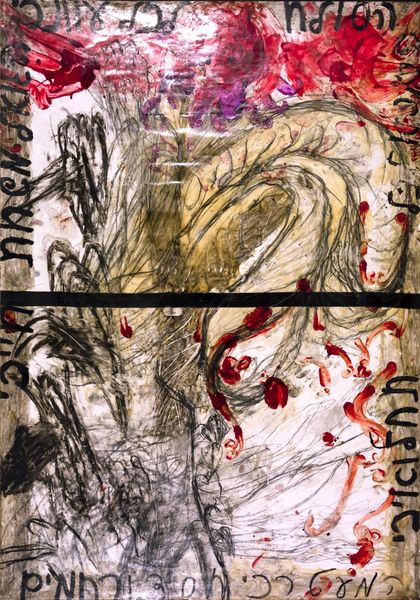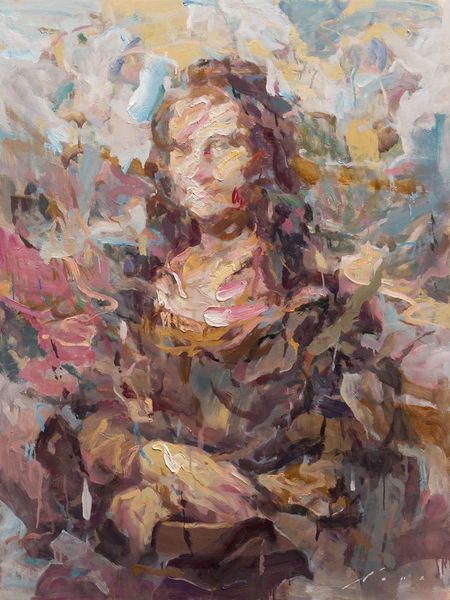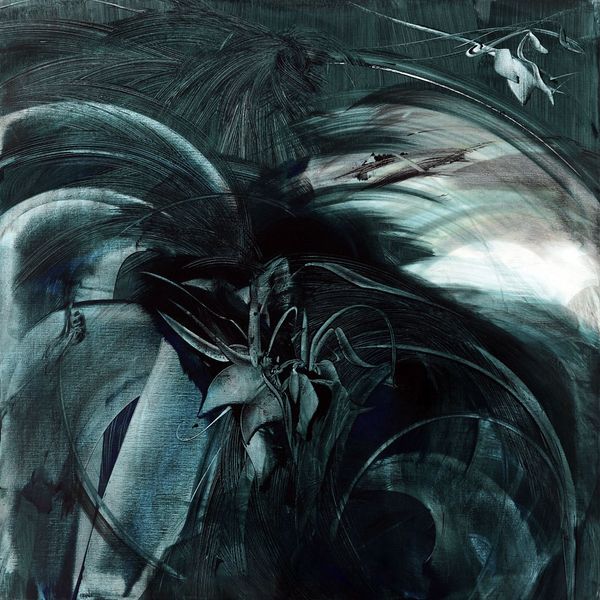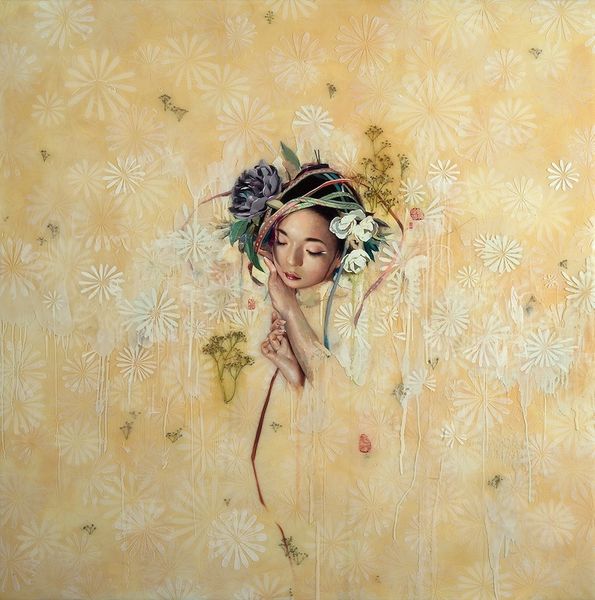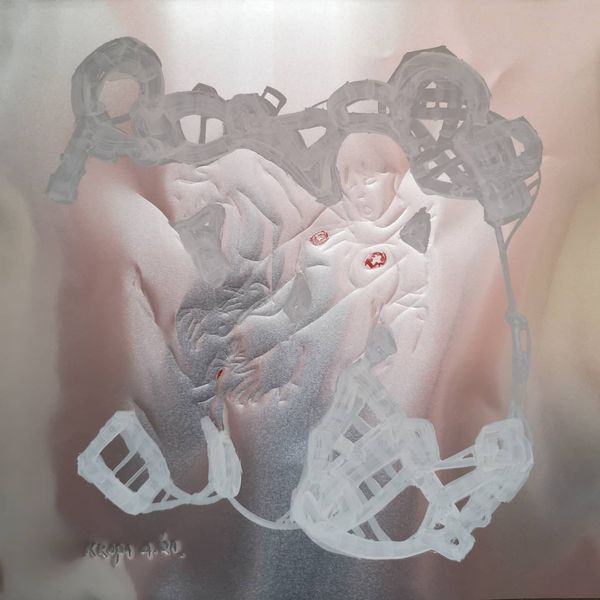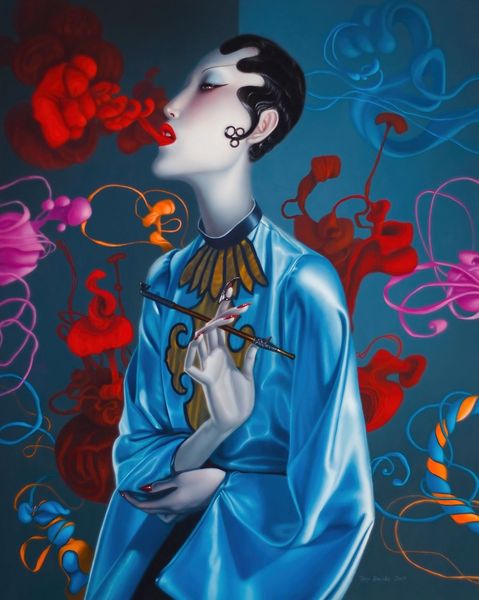
Copyright: Richard Hamilton,Fair Use
Curator: Here we have Richard Hamilton's "The Citizen," a mixed-media piece from 1983, currently residing at the Tate Modern. The work strikes me as… fragmented, disturbed. Editor: Disturbed is definitely the word. The composition, divided into two panels, creates an immediate sense of unease, doesn't it? There's the figure of the man, almost centrally placed, but then this other panel of... what exactly *is* that? Some kind of abstracted backdrop? Curator: I believe it functions as both backdrop and a field of layered signifiers. The figure's pose, the hint of brutality suggested by his uncovered torso, placed against that almost ethereal, chaotic screen on the other side... It evokes ideas about vulnerability, surveillance, perhaps a commentary on social control within a modern context. Look at the almost religious iconography suggested through his stance, yet simultaneously disrupted through his exposed chest and scruffy garments. Editor: It is powerful stuff, this interplay between religious and secular images. Looking closely, I'm interested in the materials—that mixed-media element is significant. Notice the blurred watercolor, and how that contributes to the feeling of dreamlike disorientation. This almost clashes with the steel frame holding the canvas. Do you think the materiality reflects an intended contradiction? Curator: Precisely. I feel this deliberate contradiction underscores how easily images become symbols, imbued with varied social meaning, depending on their application and historical framework. The use of different media could emphasize this visual complexity, mirroring social constructs. It's like the man himself – a constructed citizen within systems of social order. Editor: Thinking about the making of it—I'm struck by the layering. There's something almost palimpsestic about the build-up of imagery, as if the artist is deliberately obscuring and revealing, building layer upon layer in a reflection of our material culture. I wonder if the choice of seemingly 'cheap' materials plays a part. Curator: Possibly a direct commentary on Pop Art aesthetics, where mass production and everyday materials are up for cultural consumption. It invites dialogue surrounding commodification and image production as it impacts personal experience and memory. Editor: A chilling reflection, really, that's still poignant today. The choice of material helps tell the history of now through image. Curator: It truly brings forward visual representations within societal strata through his selected processes, leaving an echo of the social context of production in visual culture, as well as personal symbolism within the overall statement.
Comments
No comments
Be the first to comment and join the conversation on the ultimate creative platform.



